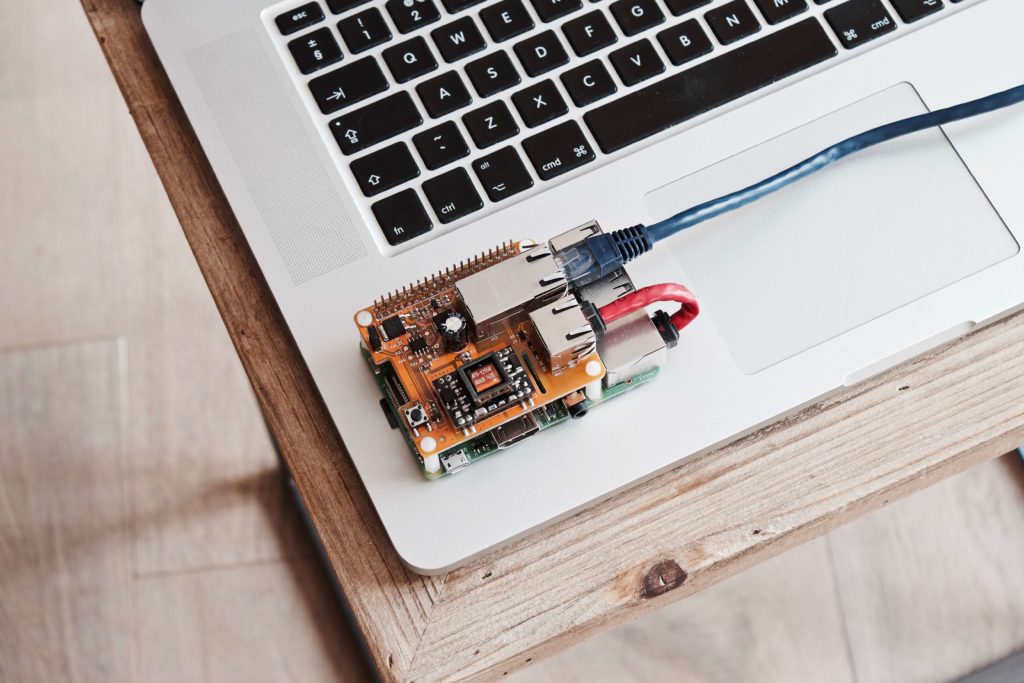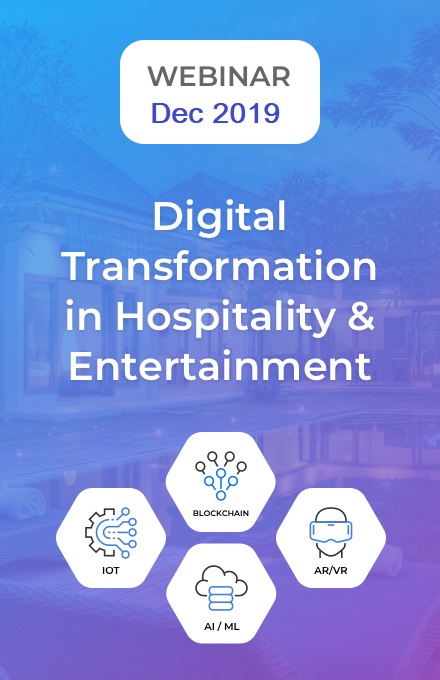In a time overwhelmed by tech news and products, 2018 was a relatively calm year for the evolution of many modern technologies. The hype cooled down, and companies big and small started turning predictions and plans of previous years into reality, to benefit their clients and themselves. As a result, many of the developments predicted in Tech Trends 2018 articles earlier in the year (and even those from 2017 and 2016) came true.
Augmented reality (AR) has successfully entered the Enterprise, bringing impactful results. The Internet of Things (IoT) keeps growing year after year across the board, while Cloud has almost reached the status of a default technology for the majority of businesses. Finally, the wait was over for the release of Magic Leap, the long-awaited AR headset.
Join us as we explore what happened to this and other 2018 technology trends in our annual round-up.
Augmented Reality Trends: Steady and Confident Evolution Across the Board
If you did not hear a lot about what was going on with AR in 2018, there is a host of reasons for that. As initial hype about the promising technology receded to the background, companies have gone to test AR, leverage augmented reality software development kits from Apple and Google, create their own AR headsets, and experiment with the technology in general. The year was rich on exciting augmented reality trends.
Enterprise AR
The evolution of enterprise AR is in progress, but it is not widely publicised. The examples are abundant — and they come from major brands.
For example, Boeing used Microsoft HoloLens to transform the aircraft assembly process. This allowed the company to cut assembly time by 25 percent, lower errors to nearly zero, and significantly increase employee satisfaction.
Other industry giants had also been using AR in their key operations in 2018.
The construction industry had the most opportunities with the technology. AR solutions can significantly transform the majority of the steps in the construction process, helping the industry achieve its long-awaited digital transformation. From architecture design to inspection to employee training, see how AR was changing the construction industry in 2018.
Consumer AR
The advent of consumer AR moved at a similar pace. Here, the steps are smaller compared to the enterprise usage, but more significant in the mass adoption of the technology.
The Apple ARKit and Google ARCore continue to evolve, while Apple’s Measure app brings a handy AR ruler into the everyday life with the latest version of iOS. AR games, experiences, and features further the slow but steady adoption in consumer AR.
As for bigger and more prominent trends in augmented reality for consumers, there is a lot to see and experience coming from leading brands. Always in search of new ways to engage with customers, the retail industry leads the way. Lacoste has significantly improved on the premise of the pioneering Sampler app by Converse, Pepsi surprised passerby with their AR stunts, while Timberland attracted clients to their storefronts with AR mirrors.
Other industries do not shy away from augmented reality trends either. Streem has transformed fixing home appliances for consumers and repair professionals alike with their AR remote maintenance mobile solution. Meanwhile, the New York Times uses AR to deliver selected stories in a more immersive way.
AR Headsets

2018 has seen a number of new AR headsets, as well as the release of the long-anticipated Magic Leap. Still, the majority of enterprise AR solutions has leveraged Microsoft HoloLens in 2018; the evolution of AR headsets in general is rather slow; many enterprises and consumers need to wait for them to become more cost-effective. The anticipated HoloLens 2 and user feedback on Magic Leap also indicate that even the top devices need further software and hardware improvements.
IoT Trends in 2018: Massive Growth Across Usage Areas
Except an interesting development in the automotive industry, IoT trends in 2018 turned out predictable — in a positive way. According to Bain & Company, enterprises took up 60 percent of IoT early adopters in 2018, compared to 40 percent in 2016.
The overarching trend for IoT in 2018 was that the number of smart devices continues to grow across the areas the technology proves to be most impactful in:
- Connected devices and smart homes: 1.2 billion devices, as opposed to 822 million in 2017
- Industrial IoT/IIoT: 440.8 million (356.5 in 2017)
- Medical IoT devices: 125.4 million (56.5 in 2017)
- Personal IoT: 407.4 million (472.6 in 2017)
These statistics once again confirm the projections across most IoT industry trends reports: the number of smart devices in both the Enterprise and consumer Internet of Things continues to grow confidently year after year.
There are interesting exceptions: the number of IoT devices in the connected car area has almost halved, falling from 103.4 million in 2017 to 64.7 million in 2018. Security concerns might be the primary reason that staggers IoT solutions for vehicles (and the automotive industry has set out to address them in 2018 with other technologies).
As for Industrial IoT technology trends, more companies were adopting the technology in 2018, which is reflected in the rise by almost 90 million IIoT devices. As industry giants like John Deere, Caterpillar, and Shell have been reaping substantial benefits from implementing IoT solutions to monitor key operations for several years now, we can expect the number to agrow higher still.

Cloud Computing Trends 2018: Cloud Becomes the New Normal
Trends in cloud computing in 2018 have confirmed that the technology became a default for enterprises and SMBs alike. According to a recent comprehensive IDG survey of 550 IT decision makers, nine out of ten companies have transferred some parts of their applications or computing infrastructure to cloud, or plan to perform the migration in the next twelve months.
The increasing migration of companies to cloud had also led to the diversification of software delivery models, which influenced cloud computing trends in its own way. While 89 percent of enterprises and SMBs still use Software as a Service (SaaS) model somewhere in their processes, 73 percent of companies also rely on Infrastructure as a Service (IaaS), and 61 percent — on Platform as a Service (PaaS) in their operations, according to IDG.
The survey also indicates that the average IT environment in enterprises and SMBs is becoming more and more cloud-based. This is reflected in the increase in spendings on cloud, with the average cloud budget rising from $1.62 million in 2016 to $2.2 million in 2018 — 30 percent of the overall IT budget.
Cloud computing trends has influenced companies in other ways. For example, 69 percent of organizations have introduced new positions and functions due to the increasing role of cloud technology in their operations, including chief cloud architect/engineer (34 percent of companies), cloud system administrator (33 percent), and security architect/engineer (30 percent).
Enterprise AI Trends 2018 — Solid First Steps in the Enterprise
Trends in AI for the enterprise are few, but they are promising. Although artificial intelligence adoption can be considered to be at early stages, many AI projects have reached the company-wide adoption stage, according to the Towards Data Science review of the state of the technology in 2018. These companies that have adopted AI make up 17 percent of respondents; 36 percent of companies in the U.S. and European Union are investing in AI projects; while 31 percent of businesses are planning such investments in the near future. What is interesting, 16 percent of surveyed companies voiced they do not plan to allot budget costs to AI at all.

Elsewhere, AI efforts are steadily becoming more pervasive and effective, more so in AI trends for mobile. Google has introduced its Machine Learning (ML) Kit, while Apple released the second version of their Core ML Kit, which allows iOS developers create their own models on Mac. This results in many algorithms that make the mobile experience on both platforms increasingly smarter, easier, and faster. Hopefully, we will see this and new AI trends evolve further in the next few years.
Financial Industry Stared Tailoring to Millennials More
The financial industry had a lot to tackle when it comes to 2018 technology trends. Financial institutions embraced mobile to deliver better client journeys and cater to millennials. As a result, many financial services were transferred from physical branches to mobile apps, allowing users to manage them anywhere and anytime without either visiting or calling the institution. One of the biggest 2018 tech trends for the industry was the establishing of a new type of financial institutions — digital-only banks, which have no physical locations at all.

Higher financial security and transparency were also key for the financial industry in 2018, as companies started adopting sophisticated technologies like face recognition. Finally, AI is being looked at as tool that will help financial organizations process data, as well as help their clients make better financial decisions.
Notably, Blute Technologies has partnered with a company whose product encompasses all of the 2018 tech trends in the industry — a digital-only bank BABB, which aims to contribute to the creation of a new economy where anyone in the world can use banking services quickly and comfortably.
2018 Tech Trends — Or Digital Transformation Trends?
Ultimately, all of this points to a bigger picture: more and more companies are performing digital transformation, whether they are only transferring a part of their operations to cloud or implementing three or more technologies at the same time. Our tech trends for 2018 summary also indicates that most of the latest technologies are becoming key to enterprise operations. And since they help make them more efficient, cost-effective, secure, and simple to manage, 2018 tech trends, along with digital transformation trends, will continue to evolve in years to come.



